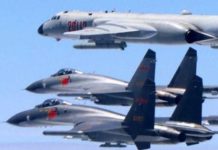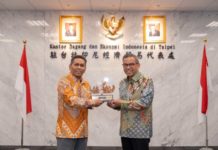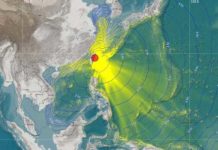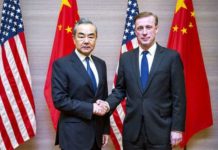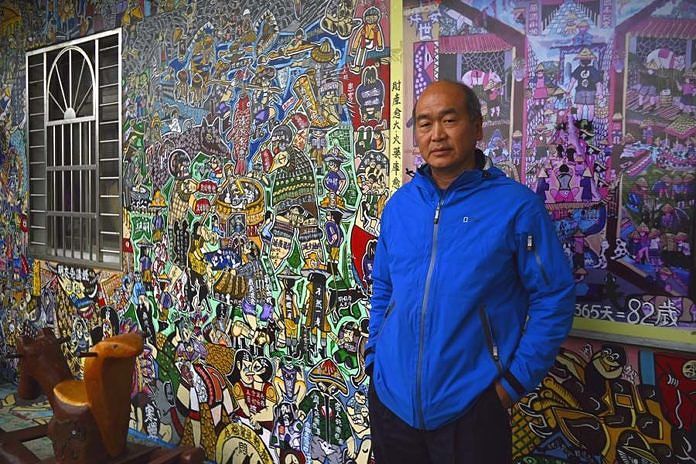
RUAN CHIAO, BALIPOST.com – Nestled in the mist-covered foothills of Taiwan’s central mountain range, Ruan Chiao village is virtually devoid of young people, but artist Wu Tsun-hsien is coaxing the Instagram generation back by transforming local homes into a canvas of colour.
Dipping his brush into a tin of beige emulsion, he carefully applies new layers of paint to his latest production — a vibrant rural scene depicting farmers in traditional weave hats tending to a flock of animals.
Behind him, an elderly villager with a walking stick shuffles his way down the main street, which is plastered with Wu’s colourful paintings.
“This village is full of old people,” the 55-year-old laments, explaining how the vast majority of youngsters — including his own children — have moved to the city, leaving elderly residents listless and lonely.
But paintings have started to bring young visitors — always keen for a selfie in a photo-friendly location — back.
“These drawings attracted many tourists to come and visit. The old people who were left here are no longer so bored. This was my biggest gain,” he beams.
Wu is not alone in this adopting this strategy.
There are now some half a dozen so-called “graffiti villages” in Taiwan that have been festooned with artwork in a bid to inject some life into rural places that have been emptied of its young.
– Empty villages –
Like many industrialised places, Taiwan’s remarkable economic transformation over the past few decades has upended rural communities and unleashed huge demographic changes.
“It’s perhaps a more recent phenomenon than it would have been in some other places,” explains Shelley Rigger, an expert on Taiwan at Davidson College in North Carolina, who said much of Taiwan’s industrial manufacturing stayed in the villages.
“People sewed Barbie doll clothing in their houses and then carried it down to a packaging plant in the middle of a village,” she tells AFP, as an example.
Ruan Chiao village, for example, used to churn out paper temple offerings.
But once much of the manufacturing shifted to mainland China in the late 1990s and Taiwan moved up the value chain, many of those jobs left.
“That’s when you see rural areas kind of emptying out,” Rigger adds.
Taiwan’s 23 million population is also rapidly ageing. The birth rate has plummeted — only 180,000 children were born last year, an eight-year low.(AFP)



